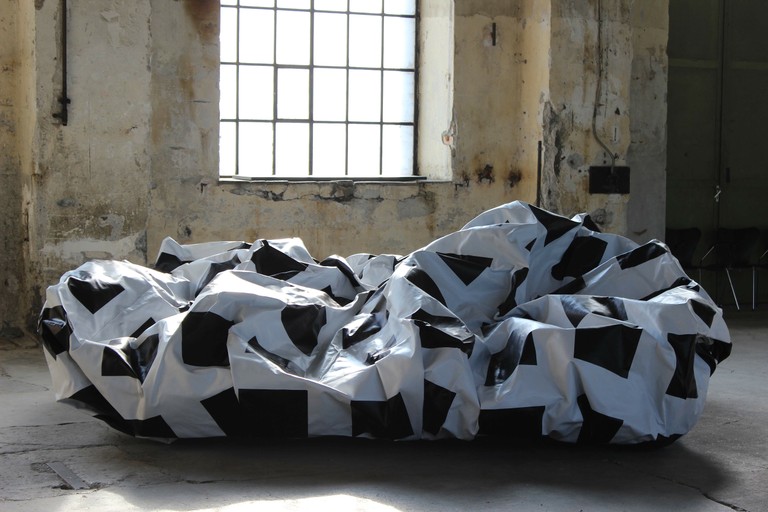ESTHER STOCKER DOUBTING STRAIGHT LINES
ESTHER STOCKER DOUBTING STRAIGHT LINES
The vacuum injection method (RTM modelling) developed especially for Esther Stocker enables the optimum realisation of the artist’s design, as
the crinkled structures of each individual sculpture can be shaped by hand.
In this process, the pre-assembled “pre-forms” are used as support structures for the matrix, which – due to their injection moulding – are
transparent and can therefore be backlit.
In addition, due to the matrix structure, extremely lightweight and stable individual components can be produced, which are also weather resistant
and therefore suitable for outdoor use.
An aluminium supporting structure in the shape of a 4-meter dodecahedron was used for the base of the sculpture. This supporting structure
enabled the individual components to be placed in optimal positions, interlocking with one another.
Zweifel an der Geraden – Doubting Straight Lines
Object Sculptures
Year: 2014
Location: Dornbirn
Contracting entity: Esther Stocker
Dimensions: 5 sculptures between 1-5 meters in diameter
Total weight: between 10-150kg per sculpture
Supporting structure: Dodecahedron substructure in lightweight
Surface finish: Printed light textile covering
Realisation period: 8 weeks
DETAIL
view of 3 sculpture
DETAIL
view of the crumpled structure
DETAIL
view of the crumpled structure



